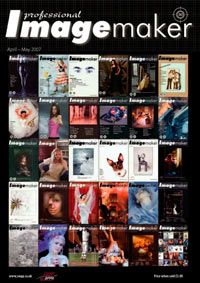articles/Lens/marvellousmacro-page1
Marvellous Macro - part 1 of 1 2 3 4 5 6 7 8 9
by Mike McNamee Published 01/04/2007

It seems to be part of the human spirit to be fascinated by small things. As soon as the microscope was invented in 1608 by Zacharias Jensen, microscopists began to try to show others what they had seen through their new instruments. Robert Hooke, who published Micrographia in 1665, started this in earnest and his sketched observations remain fascinating even today. It is remarkable in some ways that it took another 230 years before photography was invented, but the two soon married and the Royal Microscopical Society was founded in 1839 just a year after patents were filed for the photographic process. Much of our digital world of today is indebted to the reverse of microscopy, micrography. The difference is that in the microscope we make something that is small look very big and in microphotography a large image of a circuit-board would be vastly reduced in a lens system so that miniature transistors could be created. People always get these two mixed up, including Microsoft Word which is currently trying to change this sentence! Photography through the microscope is correctly termed photomicrography and makes photmicrographs. So much for the history, let's get on with the topic in hand - macro photography
Conventional photography tends to be associated with working subject distances from infinity to within about 10 focal lengths, producing a largest image of about one-tenth full size (conventionally written 1:10). Macrophotography is strictly defined as size for size (written 1:1) but in an effort to sell more lenses, the advertising copywriters in the seventies started to apply the term to zoom lenses (eg 'Nikorex' macro zoom) which could reproduce at about a quarter life-size (written 1:4). A better definition for macro, in practice, is that it covers from one-tenth full size to ten times full size (1:10 to 10:1). The elegance of this definition is that it satisfies the ad men and encompasses most nonscientific imaging equipment, including bellows. Beyond

Back in the real world, how do you get more magnification from a standard lens that only focuses to one-tenth full size? You have to move the lens away from the film/CCD with extra focussing rotation, put an extension between the lens and the camera body (extension tube or bellows) or put a lens either before, or after, the lens (a teleconverter between the lens and the camera body or a supplementary lens on the front of the main lens).
The dioptre lens fits on the front of the normal lens usually like a screw filter. The rim will be engraved with figures such as +1 or +2 for close-up lenses. The value is the dioptre strength, which is the value '1000/ focal length in metres'. Typical spectacle dioptre strengths range from 0.25 (the smallest adjustment they make) up to your editor's old eyes at -5 dioptres (ie short sighted). Typical reading glasses range +1 to +3 dioptres. The term dioptre is usually referred to as the power of the lens by the optician. It is the dioptre strength that determines the way that the lens is used. The working distance with a dioptre lens is fixed when the lens is set at infinity, and is 1000 divided by the strength, eg a +2 lens has a working distance of 1000/2 = 500mm. This is not affected by focal length, which only changes the magnification. Thus the 500mm working distance stays the same for both a 100mm lens and a 200mm lens, it's just that the 200mm lens will create an image twice the size of the 100mm lens. A dioptre lens on the front of a zoom lens enables the user to change the magnification of the image without moving the camera position.
Both Nikon and Canon supply dioptre lenses. The Nikkor lenses for longer focal lengths are more sophisticated twin, achromat designs for improved quality. Independent makes such as SRB and Hoya are available in a vast range of sizes.
You are currently on page 1
- Marvellous Macro page 1
- Marvellous Macro page 2
- Marvellous Macro page 3
- Marvellous Macro page 4
- Marvellous Macro page 5
- Marvellous Macro page 6
- Marvellous Macro page 7
- Marvellous Macro page 8
- Marvellous Macro page 9
1st Published 01/04/2007
last update 09/12/2022 14:56:30
More Lens Articles
There are 0 days to get ready for The Society of Photographers Convention and Trade Show at The Novotel London West, Hammersmith ...
which starts on Wednesday 14th January 2026





